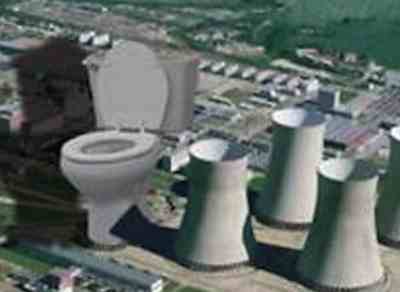
Its all about decarbonisation – as one of the world’s largest projects to transform human waste into electricity gets under way.
“They make green energy,” said engineer Chris Peot of Washington’s toilet-goers during a tour of the sprawling space in the southeast of the city.
DC Water’s Blue Plains plant treats 370mn gallons (1,400mn litres) of dirty water from more than 2mn households on a daily basis, purging it with micro-organisms that first ingest carbon and then transform nitrates into nitrogen gas.
Once that’s done, the water is clean enough to flow into the nearby Potomac River or Chesapeake Bay without disrupting the fragile ecosystems.
As for the excrement, it is either recycled as compost or, in a new step implemented six months ago, used to produce 10MW of electricity.
The “poop power” generated is theoretically enough to supply some 8,000 households, although in practice the energy is ploughed straight back into powering the plant.
To do so, plant workers collect the solid matter that slips to the bottom of the treatment pools and subject it to a Norwegian hydrolysis technique that is being used in North America for the first time.
According to Peot, DC Water’s director of resource recovery, the process allows the plant to extract organic material and convert it to methane.
When burned, the methane generates power that is used to help run the plant.
“This project embodies a shift from treating used water as waste to leveraging it as a resource,” said DC Water’s chief executive George Hawkins as he inaugurated the $470mn facility on October 5, financed by water bills.
The methane is produced through the decomposition of organic waste by bacteria in huge vats that stand 80 feet (25m) tall, with each capable of “digesting” 3.8mn gallons of solid matter.
The biogas is then used to operate three turbines, each the size of a jet engine, to produce 13MW of electricity, three of which are immediately used for the hydrolysis.
The remaining 10MW are used by the water treatment plant the biggest energy consumer in Washington reducing its carbon footprint by a third and cutting operating costs by millions of dollars a year, according to Peot.
“It saves us money, avoids us having to buy power off the grid, which largely comes from coal,” he said.
According to Todd Foley, chief strategy officer at the American Council on Renewable Energy, it’s a “way to diversify the energy mix and control our energy costs”.
“There will be an increased role for that kind of activity,” he predicted.
Wind, solar and biomass combined accounted for just 6% of the world’s electricity supply in 2014, according to the International Energy Agency (IEA) against 41% for coal, 22% for gas, 17% for hydro-power, 11% for nuclear and 4% for oil.
Biogas derived from human waste provides hope for poor countries as an energy source capable of producing power for 138mn households worldwide, according to a United Nations report published in November.
The process could improve hygiene in poorer countries, where a lack of sanitation accounts for 10% of illnesses.
It can also produce valuable fertiliser for agriculture.
The Washington facility produces 1,200 tonnes of biosolids a day recycled organic matter used as compost in community gardens, for example.
“It is making use of an asset that we have here at the plant,” Peot said. “For years, we would give it away to farmers for free as fertiliser.”
In the short term, there are plans to operate a fourth turbine and generate an additional 5MW of power.
And further down the road, Peot hopes the plant could become fully self-sufficient as is the case of a similar operation in Gresham, Oregon or even produce enough power to sell to Washington residents.

One Response
Learning about off-grid and solar development.